Mango Phase Monkey Tail Skink For Sale
$1,199.99
WE HAVE MANGO PHASE MONKEY TAIL SKINK FOR SALE. HERE ARE SOME HIGHLIGHTS:
- Corucia zebrata
- Farm Bred
- Approximately 14 – 15 Inches In Length From Head To Tail
- Adults Can Reach Up To Lengths Of 32 Inches In Total
- These Are Voracious Foragers Feeding On Fresh Fruits And Vegetables
FUN FACTS!
- These Skinks Have Prehensile Tails Meaning They Can Grip And Grab Things With Their Tails
- Gorgeous Animals Not Frequently Seen Here At Underground Covered In Rich Green And Brown Patterns Giving Them Perfect Camouflage
- Naturally Occurring Out Of The Solomon Islands
- These Skinks Have Prehensile Tails Meaning They Can Grip And Grab Things With Their Tales
- Females Are Viviparous Meaning That They Bear Live Young
- With Proper Care These Can Live More Than 20 Years In Captivity
Mango Phase Monkey Tail Skink
The Mango Phase Monkey Tail Skink, an intriguing and unique reptile, has captivated the interest of herpetologists and pet enthusiasts alike. Named for its distinctive mango-colored scales and prehensile tail, this skink is a variant of the Solomon Islands skink (Corucia zebrata), a species renowned for its vibrant coloration and adaptability. The Mango Phase stands out not only for its striking appearance but also for its fascinating behavior and habitat preferences.
Originating from the Solomon Islands, the Mango Phase Monkey Tail Skink thrives in tropical rainforest environments. Its prehensile tail, which functions almost like an additional limb, aids in climbing and navigating the dense foliage of its native habitat. These skinks exhibit a variety of captivating behaviors, including social interactions and unique feeding habits that set them apart from other reptile species.
Throughout this comprehensive guide, we will delve into various aspects of the Mango Phase Monkey Tail Skink. Readers will gain insights into its natural habitat, dietary needs, and typical behavior patterns. Additionally, we will explore essential care requirements for those considering keeping this remarkable skink as a pet.
Whether you are a seasoned herpetologist or a curious newcomer, this guide aims to provide valuable information about the Mango Phase Monkey Tail Skink. From understanding its origins and unique characteristics to learning how to create an optimal living environment, our goal is to equip you with the knowledge needed to appreciate and care for this extraordinary reptile.
Physical Characteristics and Appearance
The Mango Phase Monkey Tail Skink, scientifically known as Corucia zebrata, is an arboreal reptile renowned for its unique and striking physical characteristics. This skink typically measures between 24 to 32 inches in length, making it one of the larger members of the skink family. The elongated body is complemented by a robust, prehensile tail, which is not only a distinctive feature but also serves as a fifth limb for grasping branches and aiding in its arboreal lifestyle.
One of the most notable aspects of the Mango Phase Monkey Tail Skink is its vibrant coloration. The “Mango Phase” is characterized by a palette of yellow, orange, and green hues, which can vary significantly among individuals. This unique coloration pattern sets it apart from other skinks, with some displaying more intense yellow and orange tones, while others may exhibit a subtler blend of green and brown. These colors often form intricate patterns along the body, contributing to the skink’s camouflage in its natural habitat.
In addition to its color variations, the Mango Phase Monkey Tail Skink possesses several other distinguishing features. Its scales are smooth and shiny, providing a sleek appearance that enhances its visual appeal. The head is relatively large with a pronounced jawline, and the eyes are round and expressive, contributing to its personable look. The limbs are strong and well-developed, with sharp claws that facilitate climbing and grasping.
Another prominent trait of the Mango Phase Monkey Tail Skink is its prehensile tail, which is highly flexible and capable of curling around branches for support. This tail is not only a physical adaptation but also a behavioral one, as it allows the skink to navigate its arboreal environment with ease. The tail’s dexterity is a hallmark of the species, reflecting its evolutionary adaptation to a life spent predominantly in trees.
Overall, the Mango Phase Monkey Tail Skink’s physical characteristics, from its size and coloration to its prehensile tail, make it a fascinating subject of study and a standout among its skink counterparts.
Natural Habitat and Distribution
The Mango Phase Monkey Tail Skink, scientifically known as Corucia zebrata, is predominantly found in the Solomon Islands, an archipelago located in the southwestern Pacific Ocean. This skink species occupies a unique ecological niche within these islands, thriving primarily in tropical rainforest environments. These lush, humid forests provide the ideal conditions for the Mango Phase Monkey Tail Skink, offering ample foliage and a complex canopy structure that supports their arboreal lifestyle.
Within these dense rainforests, the skinks are often found residing in the mid to upper canopy layers, where they can navigate the intertwining branches with ease. The thick vegetation not only offers them protection from predators but also provides a rich source of food, predominantly consisting of leaves, fruits, and flowers. The high humidity and consistent temperatures of these tropical forests are crucial for the Mango Phase Monkey Tail Skink’s survival, as they rely on these conditions to maintain their hydration and metabolic functions.
The geographical distribution of the Mango Phase Monkey Tail Skink is relatively limited, confined to the Solomon Islands, which has implications for their conservation status. Habitat destruction due to logging and agricultural expansion poses significant threats to their natural environment. Moreover, the specific environmental conditions of these islands mean that the skinks have adapted to a very particular set of circumstances, making them less resilient to changes in their habitat.
Understanding the natural habitat and distribution of the Mango Phase Monkey Tail Skink is essential for conservation efforts. Protecting the tropical forests of the Solomon Islands and maintaining the ecological balance of these habitats is critical for the survival of this unique species. Conservation measures must focus on preserving these environments to ensure that the Mango Phase Monkey Tail Skink can continue to thrive in its natural habitat.
Diet and Nutritional Needs
The Mango Phase Monkey Tail Skink, a unique reptile species, has specific dietary requirements that must be carefully met to ensure its health and longevity. In the wild, these skinks are primarily herbivorous, feeding on a variety of leaves, flowers, fruits, and occasional insects. Their natural habitat provides them with a diverse diet, rich in essential nutrients necessary for their growth and well-being.
In captivity, it is crucial to replicate their natural diet as closely as possible. A balanced diet for the Mango Phase Monkey Tail Skink should include a variety of leafy greens such as collard greens, dandelion greens, and mustard greens. These greens are rich in calcium and other nutrients that are vital for the skink’s bone health and overall development. Additionally, fruits such as mangoes, papayas, and berries can be offered in moderation to provide a source of vitamins and natural sugars.
While these skinks are primarily herbivorous, occasional supplementation with protein sources like insects can be beneficial, especially for younger skinks. Offering insects like crickets or mealworms once or twice a week can help meet their protein needs. However, it’s essential not to overfeed them with protein, as excessive protein intake can lead to health issues.
Hydration is another critical aspect of their nutritional needs. Fresh water should always be available, and misting their enclosure regularly can help maintain adequate humidity levels, which is vital for their skin health and overall hydration.
It is also important to ensure that their diet is supplemented with necessary vitamins and minerals. Calcium and vitamin D3 supplements are particularly crucial to prevent metabolic bone disease, a common issue in captive reptiles. These supplements can be sprinkled on their food a few times a week to ensure they receive the appropriate nutrients.
By providing a varied and balanced diet, along with proper hydration and supplementation, you can help ensure the Mango Phase Monkey Tail Skink remains healthy and thrives in captivity.
The Mango Phase Monkey Tail Skink, also known as the Solomon Islands Skink, exhibits intriguing behavioral patterns that reflect both its wild instincts and adaptability to captivity. In their natural habitat, these skinks are predominantly arboreal, meaning they spend most of their time in trees. Their prehensile tails, which they use to grasp branches, are a testament to their arboreal lifestyle. This behavior is replicated in captivity, where they benefit from enclosures enriched with branches and climbing structures.
Socially, the Mango Phase Monkey Tail Skink is known for its unique social structure. Unlike many reptiles that are solitary, these skinks are quite social and often found in family groups called “circles.” These groups typically consist of an adult pair and their offspring, showcasing a level of familial bonding that is uncommon among reptiles. In captivity, it is essential to house them in pairs or groups to reflect their natural social tendencies, as isolation can lead to stress and behavioral issues.
Interactions between skinks are generally peaceful, characterized by mutual grooming and communal basking. However, owners should be aware of occasional territorial disputes, especially during mating seasons. It’s crucial to monitor these interactions to ensure the well-being of all individuals within the group. Additionally, the Mango Phase Monkey Tail Skink exhibits a range of vocalizations, including clicks and chirps, which serve as communication methods within the group.
In terms of unique behavioral traits, one notable characteristic is their diurnal nature. These skinks are active during the day, engaging in foraging and climbing activities. Owners may observe their skinks basking under heat lamps, an essential behavior for thermoregulation. Another common behavior is their defensive posture; when threatened, they may inflate their bodies or display their bright underbellies to deter predators.
Understanding these behaviors and social structures is crucial for providing optimal care. By mimicking their natural environment and social settings, owners can ensure their Mango Phase Monkey Tail Skinks thrive both physically and mentally.
Caring for a Mango Phase Monkey Tail Skink
The Mango Phase Monkey Tail Skink, known for its striking coloration and unique behavior, requires specific care to thrive in captivity. Creating an optimal enclosure setup is the foundation of maintaining the health and well-being of these fascinating reptiles. A spacious terrarium is essential, ideally measuring at least 4 feet long, 2 feet wide, and 4 feet tall, to accommodate their arboreal lifestyle. Vertical space is particularly important as this species enjoys climbing and exploring.
Temperature and humidity control are critical in the enclosure. The ambient temperature should be maintained between 75-85°F, with a basking spot reaching up to 95°F. Nighttime temperatures can safely drop to around 70°F. A reliable thermostat and a combination of heat sources such as ceramic heat emitters, heat lamps, and under-tank heaters can help achieve these conditions. Humidity should be kept between 60-80%, replicating their natural tropical environment. This can be managed with regular misting, a humidifier, or a substrate that retains moisture well.
Choosing the right substrate is another crucial aspect of care. Coconut fiber, orchid bark, or a mix of organic soil and sphagnum moss are excellent choices as they help maintain humidity and allow for natural burrowing behavior. Avoid substrates that can cause impaction, such as sand or small wood chips.
Equipping the enclosure with necessary items will enhance the skink’s living conditions. Include sturdy branches, vines, and plants to encourage climbing and hiding, which are essential for their mental stimulation and physical health. Provide a shallow water dish for drinking and occasional soaking, ensuring it is always clean and fresh.
Maintaining a healthy and stimulating environment for a Mango Phase Monkey Tail Skink involves regular monitoring and adjustments. Regularly check and clean the enclosure, monitor temperature and humidity levels, and observe the skink’s behavior and health. By meeting these care requirements, you ensure that your Mango Phase Monkey Tail Skink remains a vibrant and thriving pet.
Health Issues and Common Challenges
Mango Phase Monkey Tail Skinks, like all reptiles, are susceptible to a variety of health issues that can impact their well-being. Understanding these potential health concerns is crucial for any owner to ensure the longevity and quality of life for their skink. Common illnesses include metabolic bone disease (MBD), respiratory infections, parasitic infestations, and skin shedding issues.
Metabolic bone disease is a prevalent issue caused by calcium deficiency. Symptoms to watch for include lethargy, swollen limbs, and difficulty moving. This condition can be prevented by ensuring a diet rich in calcium and proper UVB lighting to facilitate calcium absorption.
Respiratory infections are another common ailment. Signs include wheezing, mucus discharge from the nose or mouth, and open-mouth breathing. These infections often result from inadequate humidity or temperature within the enclosure. Maintaining optimal environmental conditions can significantly reduce the risk of respiratory issues.
Parasitic infestations, both internal and external, can also affect Mango Phase Monkey Tail Skinks. Symptoms such as weight loss, lethargy, and visible parasites on the skin or in the feces are indicators. Regular cleaning of the habitat, along with periodic fecal exams by a veterinarian, can help in early detection and treatment of parasites.
Shedding issues may arise due to low humidity levels or insufficient hydration. If a skink has retained shed, especially around the toes or tail, it may lead to constriction and even loss of these appendages. Ensuring proper humidity and providing a shedding aid, like a moist hide, can help mitigate these problems.
Regular veterinary check-ups are essential for early detection and management of health issues. If a skink shows any signs of illness, immediate consultation with a reptile-savvy veterinarian is recommended. Preventative measures, including a balanced diet, proper enclosure setup, and routine health assessments, are paramount in maintaining the health of Mango Phase Monkey Tail Skinks.
Breeding and Reproduction
The breeding habits of the Mango Phase Monkey Tail Skink are both fascinating and complex. This particular skink species exhibits a unique mating process that requires careful observation and understanding. The mating season typically begins in the warmer months, when the skinks become more active and display mating behaviors such as head bobbing and tail waving. These behaviors are crucial for attracting a mate and initiating the breeding process.
Once a successful mating has occurred, the female Monkey Tail Skink undergoes a gestation period that lasts approximately six to nine months. During this time, it is essential to provide a stable and stress-free environment to ensure the health and well-being of the expectant mother. Proper humidity levels, adequate temperature gradients, and a nutritious diet are vital components of a suitable habitat for a pregnant skink.
When the gestation period concludes, the female gives birth to live young, typically producing one to two offspring per litter. The newborn skinks are relatively large and well-developed, capable of independent movement and feeding shortly after birth. However, they still require a safe and nurturing environment to thrive. Providing ample hiding spots, appropriate substrate, and a consistent food supply will help the young skinks grow and develop properly.
Creating suitable breeding conditions in captivity involves replicating the skink’s natural habitat as closely as possible. This includes maintaining optimal temperature and humidity levels, providing a varied diet rich in vitamins and minerals, and ensuring the enclosure is spacious enough to allow for natural behaviors. Breeders may encounter challenges such as difficulty in pairing compatible mates, managing stress levels, and ensuring the health of both the mother and the offspring. Patience, observation, and a thorough understanding of the species are key to overcoming these obstacles and achieving successful breeding outcomes.
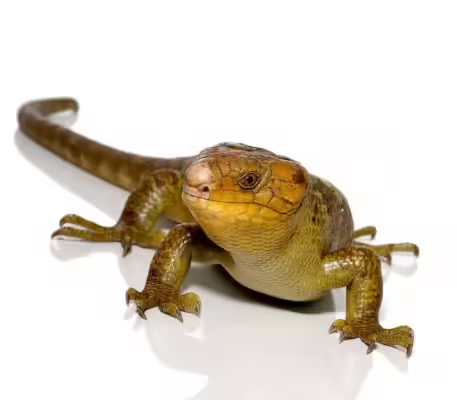




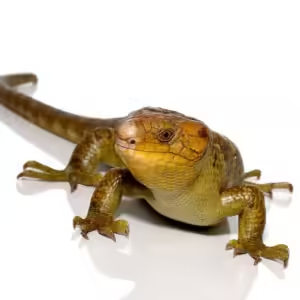






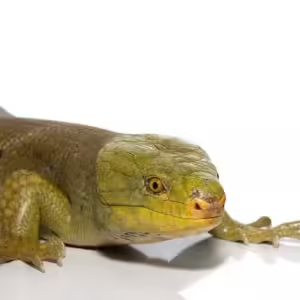

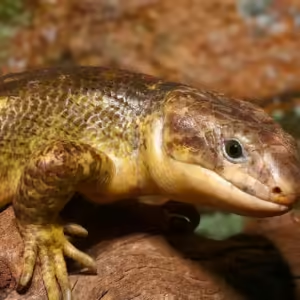

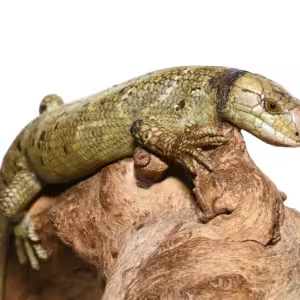
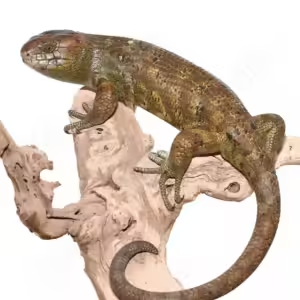

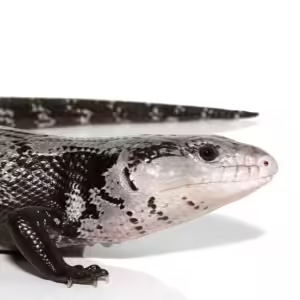


connie Parrish –
awesome awesome site!!!! so fast and great skink!!! so pleased . thank you again
Corrina Hurley –
Awesome company I would recommend to family and friends
Tyler Smith –
Second time ordering both was successful great company
Heather Kirstein –
Skinks were awesome.
Ordered 3 different Skinks from this company. First time ordering online and the skinks were all very lively and happy when they arrived. It’s unfortunate what happened to some others with shipping. Everyone is at the mercy of the shipper once it leaves the breeders hands. Mine were a day late, but it wasn’t their fault. The babies were all good and are settling in nicely. Thanks guys!